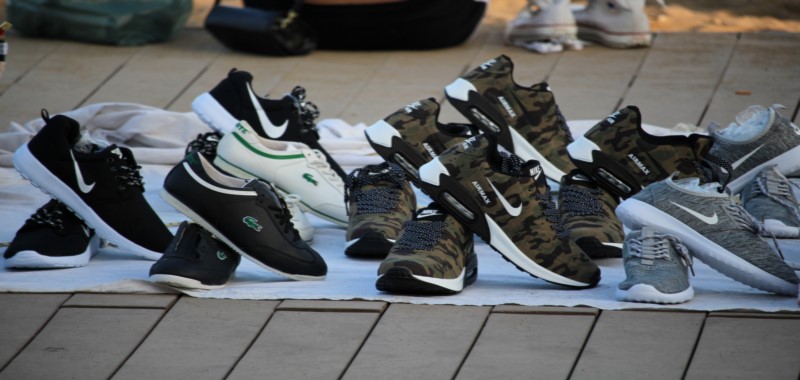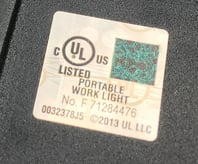
Nearly any brand can fall victim to counterfeiters, whether it’s the clothes and accessories we wear, the food and drinks we consume, or the electronics we use for work or entertainment. It’s a problem that costs brands worldwide a quarter-trillion dollars annually.
Fortunately, you can fight back. Security labels are your first and best line of defense against criminals who would deceive your customers and tarnish your image. Ongoing advancements in security label technology help brands like yours keep an eye on their supply chain and stay one step ahead of the counterfeiters.
Why Security Labels Are Necessary
When most of us think about brand counterfeiting, we think about knock-off handbags or shoddy electronic devices. But almost any brand can fall victim to counterfeiters, from food and beverage makers to pharmaceuticals.
It’s a major problem that causes brands to lose substantial revenue and goodwill. For some brands – such as healthcare companies – their entire business model depends on consumers’ perception of trustworthiness associated with their brand name.
Black Market vs. Gray Market
In addition to the widespread challenges caused by counterfeit products traded in the so-called black market, many businesses find gray market activity to be equally vexing.
Gray market trading happens when legitimate products are traded in markets for which they were not intended. While it may not seem especially bad on its face to have more buyers and users of a product than expected, factors like distance, time zone differences, language, warranty claims, and varying regulatory requirements can lead to big challenges.
Widespread gray market activity typically begins with diversion. Diversion occurs when, unknown to the manufacturer, a product is “diverted” from its intended distribution channel.
For example, a diverter might create the appearance that they will send a shipment of jeans to South America but instead will redirect the shipment and sell the jeans in the U.S. Depending on the manufacturer’s pricing policies, the diverter may be in a position to undercut the prices of authorized distributors in the US market. Pricing arbitrage like this is a common motivation for diversion. But the reasons why and the methods used are limited only by the creativity of the diverters.
How Security Labels Protect Brands and Consumers
In all these scenarios, the right label can make all the difference. Security labels help brands verify the authenticity and uphold the integrity of their products throughout the supply chain, from the factory floor to the consumers’ hands. Distributors, retailers, and even ardent followers of a brand can learn to look for security features — some obvious and some barely perceptible — to confirm they have your true product in their hands.
Security labels also play a key role in assuring consumers that the genuine products they purchase have not been tampered with on their way from the maker to the consumer. Tamper evident labels are special types of labels designed to change in an obvious and irreversible way when a product is opened or if someone attempts to remove the label. Additionally, special features in certain types of security labels enable manufacturers to more easily see where each of their products ends up, helping them pinpoint where black or gray market activity is taking place, so they can put a stop to it.
Types of Security Label Technology
A knowledgeable brand protection label provider should be able to advise you on the combinations of security features available to address your counterfeiting or product diversion challenges. They may introduce you to some of the following technologies:
- Serialization: Unique identifiers like serial numbers often are the first step in establishing a system of secure product markings.
- Barcodes: Barcodes commonly appear on products. While consumers recognize them as being useful for inventory control and as a means to speed the checkout process in retail settings, many barcodes on products carry information that is used for brand protection purposes.
- Microprint: Microprinting involves a serial number or other information in print too small to be read by the naked eye. Some clever applications of this can be achieved, such as embedding the microprint within a patterned area in such a way that it blends into the background but can be located and read by those in the know.
- Color-shifting ink: You may be familiar with this technology from U.S. currency. Common color-shifting inks change color depending on the angle from which you view it. Color shifts also can be triggered by exposure to things like heat or other catalysts.
- Specialty Technologies: Certain technologies, typically high-degree-of-difficulty printing techniques, are
 used to create marks on products. Those marks are intended to be readily recognizable and exceptionally difficult to accurately reproduce except by their authorized source. Optically variable devices (OVDs), such as holography, lens effects, and diffraction are commonly used for technologies. Most people seeing any of these would probably call them holograms. Counterfeiters may have become skilled at copying the basic outward appearance of some holograms, but these technologies enable their creators to include unique identifiers with amazing detail and intricacy. As a result, even a “good copy” of an OVD that might at first glance look right will be distinguishable from the real thing to anyone who knows what they are looking at.
used to create marks on products. Those marks are intended to be readily recognizable and exceptionally difficult to accurately reproduce except by their authorized source. Optically variable devices (OVDs), such as holography, lens effects, and diffraction are commonly used for technologies. Most people seeing any of these would probably call them holograms. Counterfeiters may have become skilled at copying the basic outward appearance of some holograms, but these technologies enable their creators to include unique identifiers with amazing detail and intricacy. As a result, even a “good copy” of an OVD that might at first glance look right will be distinguishable from the real thing to anyone who knows what they are looking at. - Tamper evidence: This is any security feature that indicates an item or label has been tampered with. For example, the label itself may self-destruct upon removal so it can’t be reapplied. Other labels will leave behind a written message — “void” — if removed or mark the surface of the product.
- Track and trace: Track and trace systems are technology platforms used in concert with security markings on products to enable brand owners to get a handle on their supply chains. If you’re not sure whether product diversion is hurting your brand, this is where you should start. The “track” aspect of these systems enable the brand owner to record information about a shipments journey through its distribution channels, sometimes all the way to the consumer. The “trace” side enables interested parties, like law enforcement, investigators, and brand owners to trace a product back through its journey. This type of information can be especially helpful with gray market problems. Often, these systems carry an additional benefit by supporting consumer engagement programs, warranty administration and various other marketing initiatives.
Applications of these technologies typically fall into two categories: overt or covert:
- Overt: Technologies ranging from things as common as serial numbers to color shifting materials, and even the outward appearance of holograms all add overt security to labels. These serve as visible elements that are readily recognizable to consumers, retailers, and others who might be interested in the authenticity of an item.
- Covert: Other technologies are used to create features that are disguised or hidden within an item. Some commonly used techniques for creating covert marks include micro-text (literally print so small it can be read only under a microscope), specialty inks that can be seen only under specially tuned lighting (UV, Infra-red, and laser can be used), and other materials that can be detected with specialized devices. Counterfeiters may overlook them, but brands, distributors, and retailers know what and where they are.
For many years counterfeiters and the brands that comprise the counterfeiters’ favorite markets have been locked in an arms race. As brands introduce new overt features, counterfeiters learn how to duplicate them. So, the most effective security labels typically include multiple layers of security, the layers being created by mixing overt, covert, and tamper-evident elements in unique placements and combinations.
Anti-counterfeiting technology is advancing rapidly, with new solutions reaching the market frequently. The good news is you don’t have to jump immediately to the most cutting-edge label feature. A quality label vendor will discuss options with you and will ensure that you’re not paying for a technology you don’t need.
Security Labels Protect Your Brand
Your brand is everything. It’s the mark of quality your customers rely on and it’s the reputation your company has worked so hard to achieve and maintain. Counterfeiting and diversion risk all of that.
To keep your brand safe, start a conversation today with your label printer about which of the latest anti-counterfeiting, anti-diversion features might serve your needs. At The Label Printers, we’d be happy to walk you through your options.

